A vitamin is an organic compound needed by organisms in tiny amounts as a required nutrient. These must be obtained from the diet as organisms cannot produce them in sufficient quantities. The term does not include other vital nutrients such as essential fatty acids, dietary minerals or essential amino acids (which are generally needed in larger amounts than vitamins). Vitamins are categorized based on their chemical and biological activities and not on their structure. This means that every type of vitamin refers to a certain number of vitamer compounds related to the biological activity that is associated with a particular vitamin. Vitamers are convertible to the active form of vitamin in the body and are also usually inter-convertible to one another.
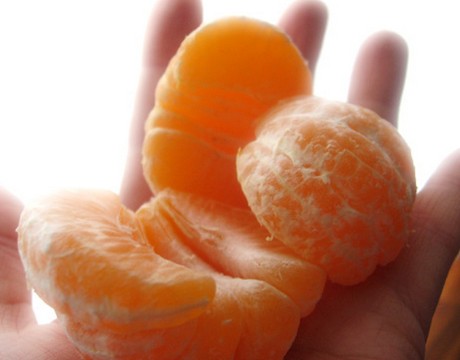
Orange are a great source of Vitamin C.
There are two main types of vitamins: fat soluble, and water soluble vitamins. The vitamins' solubility shows how the human body can adjust and manage to use them.
The fat soluble vitamins are vitamins A, D, E and K; which are mostly found in foods that contain oils and fats. Fat soluble vitamins are stored in the body and absorbed in the intestine. Vitamin A can be obtained from eating liver and fat-containing dairy products. It helps a great deal in the eyesight improvement and also helps in keeping a healthy skin. Some of the rich sources of vitamin A include carrots, apricots, milk, sweet potatoes and eggs.
Vitamin D works towards strengthening the body's bones and teeth as it aids in the calcium absorption of the body. Health experts suggest that every individual needs to have sufficient amount of sunlight exposure as this can promote the production of vitamin D in the skin. Upon exposure to sunlight, the body produces an inactive form of vitamin D and this will later be activated in the kidney and liver.
Foods that are good sources of vitamin D includes milk, egg yolk, fish and other dairy products. Calcitriol is an important metabolite of Vitamin D and was found to be able to slow the growth of prostate cancer cells.
Vitamin E helps in the formation of red blood cells and also provides proper assistance and care for the lungs. Nuts, egg yolks, green leafy vegetables and whole grains such as oats and wheat are good sources of vitamin E.
Vitamin K aids in the maintenance of the blood clotting proteins to normal levels. Some vitamin K comes from the intestine while some comes from ingested food. Pork, green leafy vegetables, dairy products such as milk and yogurt are good sources of vitamin K.
The water soluble vitamins are absorbed directly into the blood stream and cannot be stored in the body. Vitamin B and Vitamin C are the water soluble vitamins. When an individual consumes more vitamin B or vitamin C that what he or she needs, the body will excrete excess vitamins through sweat or urine as there is no way for the body to store the unused vitamins. In order for used and lost vitamins to be replaced every 24 hours, water soluble vitamins should be included to one's daily diet. Water soluble vitamins include Vitamin C, folic acid, and the B-vitamins such as B1, B2, B3, B6 and B12.
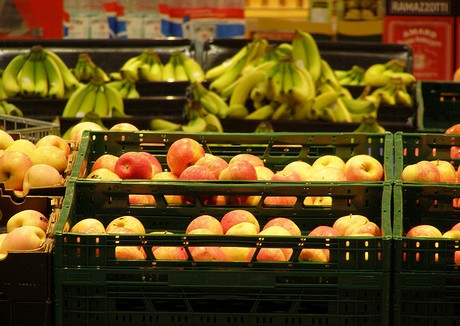
· Vitamin C
· Folic acid
· Thiamin or vitamin B1
· Riboflavin.
· Vitamin B3
· Vitamin
· Vitamin B6
· Cyanocobalamin and methylcobalamin
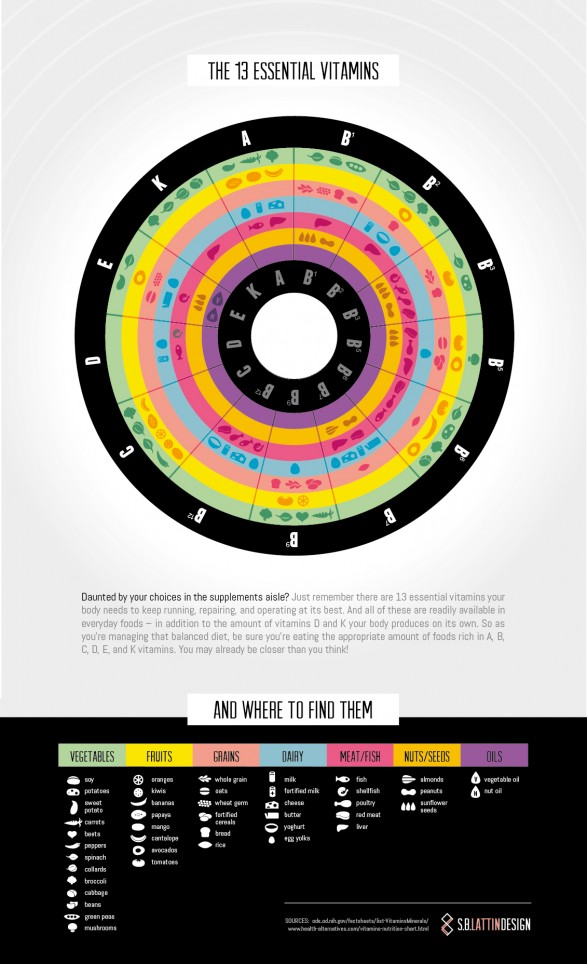
Vitamin A is an essential fat-soluble vitamin wherein retinol is its basic molecule. Retinol is transported through the chylomicrons to the liver once absorbed, and will either be re-exported into the plasma together with retinol-binding protein for the purpose of delivering to tissue sites; or will be stored as retinol ester.
It is mostly found in animal foods such as milk, fish oil, liver, and kidney; and in supplements whenever the needs are for vitamin A are not met by diet alone. Many foods, especially cereals are fortified with vitamin A
Dietary vitamin A can be obtained from pro-vitamin A carotenoids sources from plants, such as carrots. In western countries, it is generally termed as vitamin A whilst in developing countries it often goes under the name of pro-vitamin A carotenoids.
Retinoic acid is a vital hormone-like growth factor for cells such as the epithelial cells. Vitamin A is one the essential vitamins needed by the eye's retina in the specific metabolite form, the retinal molecule that is light-absorbing, which is essential for both scotopic vision (low light) and color vision.
The suggested NIH vitamin A daily allowance is 3,000 IU (international units) for adult males and 2,310 IU for adult women; this increases to 2,565 IU for pregnant women and 4,300 IU for those lactating.
There are many known role of vitamin A in the body, and these are associated with many health benefits, these include:
1. Vision.
2. Immunity.
3. Gene expression regulation.
4. Growth and development.
5. Production of red blood cells.
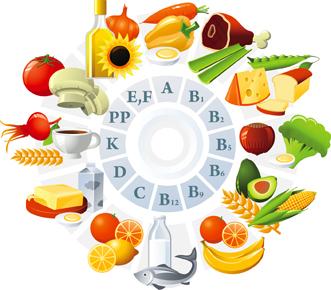
Liver, red pepper, paprika, cayenne, chili powder, sweet potatoes, carrots, dark leafy vegetables, butternut squash, dried herbs, lettuce, cantaloupe, and dried apricots are some of the foods that are highly rich in vitamin A.
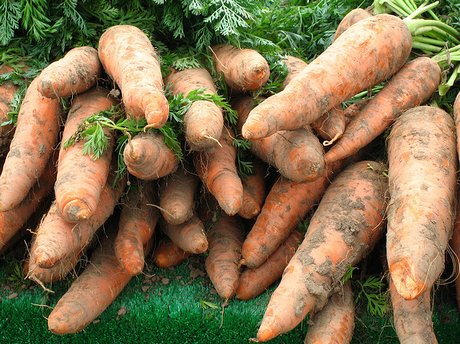
Carrots are a rich source of Vitamin A.
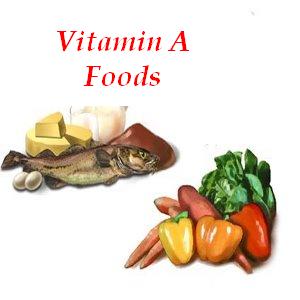
· Vitamin B1, also referred to as thiamin or thiamine, is one of the water-soluble B vitamins.
· All B vitamins aid in the body's conversion of carbohydrates (food) into glucose; which is used primarily in producing energy.
· They also help in metabolizing proteins and fats, and are needed for healthy eyes, hair, skin, and liver.
· Aside from that, B complex vitamins help the nervous system to function properly as they are required for the correct functioning of the brain.
This condition can result from having an insufficient intake of thiamine, consumption of anti-thiamin factors in food, excessive loss of thiamin from the body, increased requirement for thiamin, or a combination of these factors. Some of the common diseases associated with a vitamin B1 deficit include:
1. Beriberi.
2. Cataracts.
3. Wernicke-Korsakoff Syndrome.
4. Alzheimer's disease.
Some excellent sources of thiamine (vitamin B1 rich foods) include peas, lentils, pork, orange, spinach, cantaloupe, pecans, milk, egg, Brazil nuts, long grain white rice, long grain brown rice, white bread, whole wheat bread, and vitamin fortified foods.
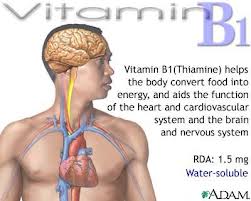
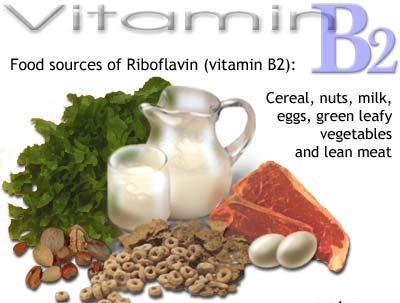
Vitamin B2, also referred to as riboflavin or Vitamin G, is one of eight B vitamins that are water-soluble.
It aids in the body's conversion of foods or carbohydrates into glucose, which is primarily the body's fuel, in order to produce energy.
The body does not store B vitamins as they are water-soluble. This group is also referred to as the B complex vitamins; they aid in the body's metabolizing of proteins and fats; and are vital for healthy skin, eyes, hair, and liver.
Most foods that were derived from plants and animals contain at least trace amounts of vitamin B2. Bread and wheat flour have been enriched with riboflavin, as well as iron, niacin, and thiamine, in the United States since 1943.

Vitamin B3, also referred to as niacin or Vitamin P, is a water-soluble vitamin that cannot be stored in the body.
The derivative form of niacin is nicotinamide, which is used by the body in forming the coenzymes nicotinamide adenine dinucleotide (NAD), as well as the nicotinamide adenine dinucleotide phosphate (NADP).
These chemical structures should not to be associated with the nicotine found in tobacco, as they are not related although they have similar names.
Niacin rich foods include beef liver, tuna, salmon, chicken, turkey, ground beef, peanuts, lentils, lima beans, baked potato, almonds, mushrooms, flour tortilla, peach, carrot, sweet potatoes, pasta, barley, peanut butter, and fortified foods such as cereal.
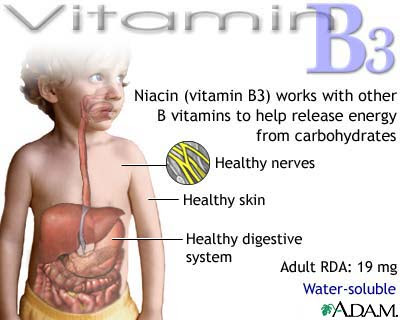
Vitamin B6, also referred to as pyridoxine, is a water-soluble vitamin which was first isolated in the 1930s. It is naturally present in several foods and can also be consumed in the form of dietary supplements.
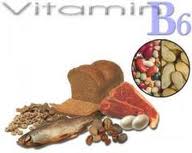
There are three forms of vitamin B6: pyridoxine (PN), pyridoxal (PL), and pyridoxamine (PM).
The principal coenzyme form, which is the most important in human metabolism, is the phosphate ester derivative pyridoxal 5′-phosphate (PLP).
Other forms of vitamin B6 are Pyridoxine-5-Phosphate, P5P, P-5-P, Adermine Hydrochloride, Chlorhydrate de pyridoxine, Pyridoxal, Piridoxina, Pyridoxal Phosphate, Adermine Chlorhydrate, and Pyridoxine HCl.
Biotin, also referred to as Vitamin B7 or Vitamin H, is a water-soluble vitamin that is primarily classified as a B-complex vitamin.
It is required by all forms of life yet only yeasts, bacteria, algae, and some plant species have the ability to synthesize it.
All B vitamins are needed by the body in order to have healthy liver, eyes, skin, and hair. They are also essential in the proper functioning of the nervous system.
B vitamins are not stored in the body and excess amounts are eliminated through waste products such as urine and sweat.
Bacteria found in the intestine can produce biotin and this nutrient is also found in trace amounts in several foods. Biotin is also vital for normal embryonic growth thus; it is a highly needed nutrient during pregnancy.
The B vitamins are a group of water soluble vitamins that play essential roles in the metabolism of cells.
It was once thought that there was just one vitamin in this group – referred to as vitamin B – Later studies have shown that the B vitamins are chemically distinct, though they often coexist in the same foods.
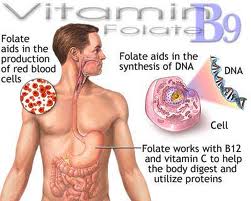
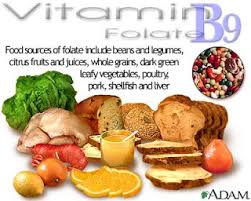
Vitamin B12, also referred to as cobalamin, is primarily produced by bacteria in the large intestine below the ileum. This makes animals the primary dietary sources of this essential nutrient. Because the vitamin is produced below the ileum it can not be absorbed by the body and it is therefore often the case that Vegans may undergo Vitamin B12 deficiency unless they take supplements or eat fortified foods.
The water-soluble vitamin B12 has the largest and the most complex chemical structure among all the other vitamins. The forms of this nutrient that are used in the human body are 5-deoxyadenosyl cobalamin and methylcobalamin.
In most supplements, the cobalamin used is under the form of cyanocobalamin; these are later converted readily into methylcobalamin and 5-deoxyadenosyl in the body. Cobalamin in mammals is a cofactor for only two enzymes, namely: L-methylmalonyl-CoA mutase and methionine synthase.
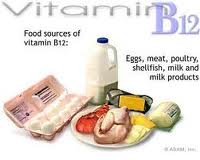
Choline is a water-soluble component of several vital chemicals in the body. It is one of the essential nutrients in the body, although it is not by strict definition considered to be a vitamin.
Choline, as well as the other compounds derived from it such as metabolites, have numerous significant biological functions that include:
Vitamin C, a water-soluble vitamin, is also known as ascorbic acid or dehydroascorbic acid. It is necessary for normal growth and development of human and other living organisms. Water-soluble vitamins are those that can easily dissolve in water and the leftover amounts or traces of the vitamins leave the body through the urine.
Humans do not have the ability to make and produce vitamin C; that is why it is best to obtain this essential vitamin through diet.
Fruit such as oranges and cabbage are a great source of vitamin C.
This vitamin is involved in maintaining normal blood levels of phosphorus and calcium. It is also known to help in the body's calcium absorption, aiding in the formation and keeping strong bones.
By itself, vitamin D is biological inactive, wherein proper processes should be conducted to metabolize it to its biologically active form. Whether synthesized in the epidermis of the skin, or consumed through diet, vitamin D will enter the circulation and will be transported to the liver. Some of the significant functions of vitamin D involve the following:
1. Calcium balance.
2. Immunity.
3. Cell differentiation.
Lack or deficiency of vitamin D can result to certain diseases and health disorders such as:
1. Rickets.
2. Osteomalacia.
3. Muscle pain and weakness.
Vitamin E plays a major role in the following:
Proteins are macromolecules and are considered as the most vital class of biochemical molecules, aside from carbohydrates and lipids that also play a significant role in life. Proteins are important due to the fact that it is the basis for the major structural components of human and animal tissues. But what are proteins? Proteins are basically composed of one or more unbranched chains of amino acids. A typical protein is comprised of around 200 to 300 amino acids but there are certain instances wherein it can be larger (the largest is the protein found in cardiac and skeletal muscle known as titin; it contains around 34,350 amino acids in a single chain) or it could be much smaller (the smallest are called peptides).
Eating foods rich in potassium is highly recommended as it helps in both maintaining body fluid and electrolytes.
There are several foods that are rich in Potassium
Dried herbs ,Chervil and coriander Parsley ,Avocados ,Red chili powder,Cocoa powder and chocolate,Dried fruits ,Dried nuts ,Seeds of pumpkin and sunflower.Beans and dates are also included as foods in the 'rich in potassium list'.
Carbohydrates are sugars and starches known as saccharides and they provide energy for animals and humans, as well as the cellulose that makes up the structures of several plants.
This compound is basically made up of carbon, hydrogen and oxygen formed by plants, and has a chemically formula of Cm(H2O)n. For instance, glucose, a simple sugar is made up of six carbon atoms, 12 hydrogen atoms and six oxygen atoms. It has the formula C6(H2O)6 and is shaped like a hexagon; other forms of writing it are C6H12O6 and H-(C=O)-(CHOH)5-H.
Complex carbohydrates are commonly found in whole grain breads, vegetables (cellulose), brown rice, pasta, legumes and rice. This type of carbohydrates takes a longer time to be digested by the body. Foods with unrefined grains such as brown rice hold complex carbohydrates; unlike refined grains, such as white rice. This is due to the refining process that removes some of the grain's nutrients and fiber.
Fats consist of an extensive group of compounds which are basically insoluble in water and soluble in organic solvents.
Fats can either be liquid or solid at room temperature, based on their composition and structure. Along with carbohydrates and proteins, fats are one of the three main nutrients used by the body as energy sources. The total amount of energy produced by fats is nine calories (37.8 kilojoules) per gram while carbohydrates and proteins each provide four calories per gram.
Food contains a mixture of three types of fats: saturated, monounsaturated and polyunsaturated fats. Some of the most common food sources of fat include pork, beef, chicken, almonds, nuts, avocados, salmon and eggs. Although fats are basically needed in the body, they should be taken in moderation in order to avoid various fat-related health disorders.
Minerals are substances that are simple-structured in nature yet play a vital role in several metabolic functions. Numerous minerals are components of enzymes, which are the catalysts of the body's chemical reactions. Aside from that minerals help in controlling and regulating the normal function of animal and human tissues, muscles and organs. For instance, potassium and sodium are both important in keeping proper balance of fluid. Calcium acts as a major structural component of teeth and bone and iron transports oxygen in the entire blood stream of the body.
The body requires more than 100 mg/day of major minerals. This includes large amount of calcium, chloride, magnesium, sodium, phosphorus, potassium and sulfur. The types of mineral needed in higher quantities are known as macro-minerals.
Minerals –both the major and trace minerals—are vital due to the fact that they provide structure in the formation of teeth and bones; aids in keeping muscle contractility, normal heart rhythm, acid-base balance and neural conductivity; and help in regulating cellular metabolism by being part of the hormones and enzymes that modulate cellular activities.
Calcium, one of the most abundant mineral in the body, is a vital nutrient that is required for muscle contraction, secretion of enzymes and hormones, blood vessel contraction and expansion, and the transmitting of impulses throughout the nervous system.
Lack of this essential nutrient can lead to numerous fatal conditions such as rickets, which can greatly affect bone growth in children and causes bone deformities as well. Lack of calcium in adults can cause osteoporosis. Due to the high decrease of calcium level in post-menopausal women, they become particularly more prone to osteoporosis.
Some of the most common and healthy sources of calcium rich foods include the following:
Iron is one of the most essential nutrients needed by the body. It makes the cells "breathe" due to the fact that it works with protein in making hemoglobin in red blood cells. Some of the main iron rich foods include spinach, raisins, tofu and chicken. Hemoglobin is responsible in carrying oxygen to different parts of the body in order for it to conduct its normal functions. Iron is stored in the bone marrow, liver, and spleen.
There are generally two forms of dietary iron rich foods:
1. Heme iron
2. Non-heme iron.
Iron is the best described amongst all the micronutrients. It is an essential component of numerous enzymes and proteins, and is major element in the metabolism of living organisms. By making use of the Iron rich foods list below it is hoped that you will be able to easily incorporate this important mineral into your daily diet.
Hemoglobin, which is the primary protein in red blood cells, is responsible in transporting oxygen from the lungs to the other parts of the body. Hemoglobin has a unique ability to acquire oxygen in a rapid manner during the short time it comes in contact with the lungs, and then releases oxygen upon its circulation through the tissues. Myoglobin aids in matching the supply of oxygen to the amount needed by working muscles. The main function of myoglobin is to conduct short term storage and transport of oxygen in muscle cells.
© Copyright vnandhininutrilite.in | Design by V V Technology